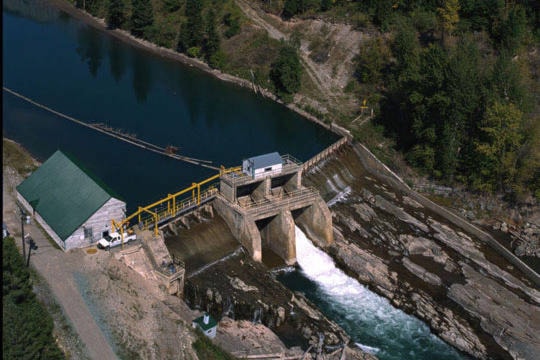Regional district staff is working with the province to address a long-standing water crisis in the South Country, however, the elected board directors also endorsed a motion to declare a state of local emergency if deemed necessary to help speed up provincial government action.
The water crisis, raised by Area B Director Stan Doehle during a board meeting in August, outlined lower water levels in aquifers out in Baynes Lake and Elko. Doehle’s report found that water from the Elko River isn’t feeding seven sinkholes near the Elko Dam due to issues with the headpond, which is affecting water levels at nearby lakes and water sources, based on data collected from a retired geologist who lives in the South Country area.
Doehle’s report found that the headpond needs to operate at a maximum level of 917 meters in order to feed the sinkholes, however, BC Hydro, which owns the Elko Dam, is currently holding the headpond at 912 metres, slightly above the minimum requirement set out by the provincial Comptroller of Water Rights.
READ: Officials raise alarm over environmental ‘crisis’ in Baynes Lake area
RDEK staff has been working with the provincial government through a section in the Water Sustainability Act that would allow for a back channel diversion from the Elk River to the sinkholes for a term not exceeding 24 months.
The motion passed by the RDEK board during a monthly meeting on Friday included a provision to declare a state of local emergency if deemed necessary to help speed up government and permit approvals.
“I appreciate the support from the board on this motion,” said Doehle. “There are two communities without water and you can’t put any more importance on this issue.”
The water crisis is two-fold, as Doehle’s concerns are focused on lower water levels in area wells and lakes, in terms of human consumption, along with the adverse effects on surrounding ecosystem habitat and wildlife.
The dam has not been generating power since 2014, but BC Hydro continues to maintain the facility to transfer river water, according to a statement previously issued by the Crown Corporation. Flashboards on the east side of the headpond were removed three years ago and weren’t replaced due to safety issues, according to the same statement.
“[BC] Hydro has made it quite clear they have no interest in working on restoring the flashboards in the dam,” Doehle said. “They made it quite clear…I think the smart move is to go on the route we’re going in sculpting out the back channel because that’s a permanent fix.”
Additional chemical testing completed over the last few weeks shows a relationship between elevated levels of selenium in the Elk River and well tests in the Baynes Lake area, proving that the river is the water source, according to Doehle. BC Hyrdo continues to maintain there is no conclusive link between Baynes Lake water levels and Elko Dam operations.
Doehle added he is hoping to approach Teck for their technical expertise on selenium and water quality issues. Additionally, the RDEK is hoping to reach out to Canfor, which operates the Elko sawmill, regarding the water quality status of the company’s well.
trevor.crawley@cranbrooktownsman.com
Like us on Facebook and follow us on Twitter
Want to support local journalism during the pandemic? Make a donation here.
